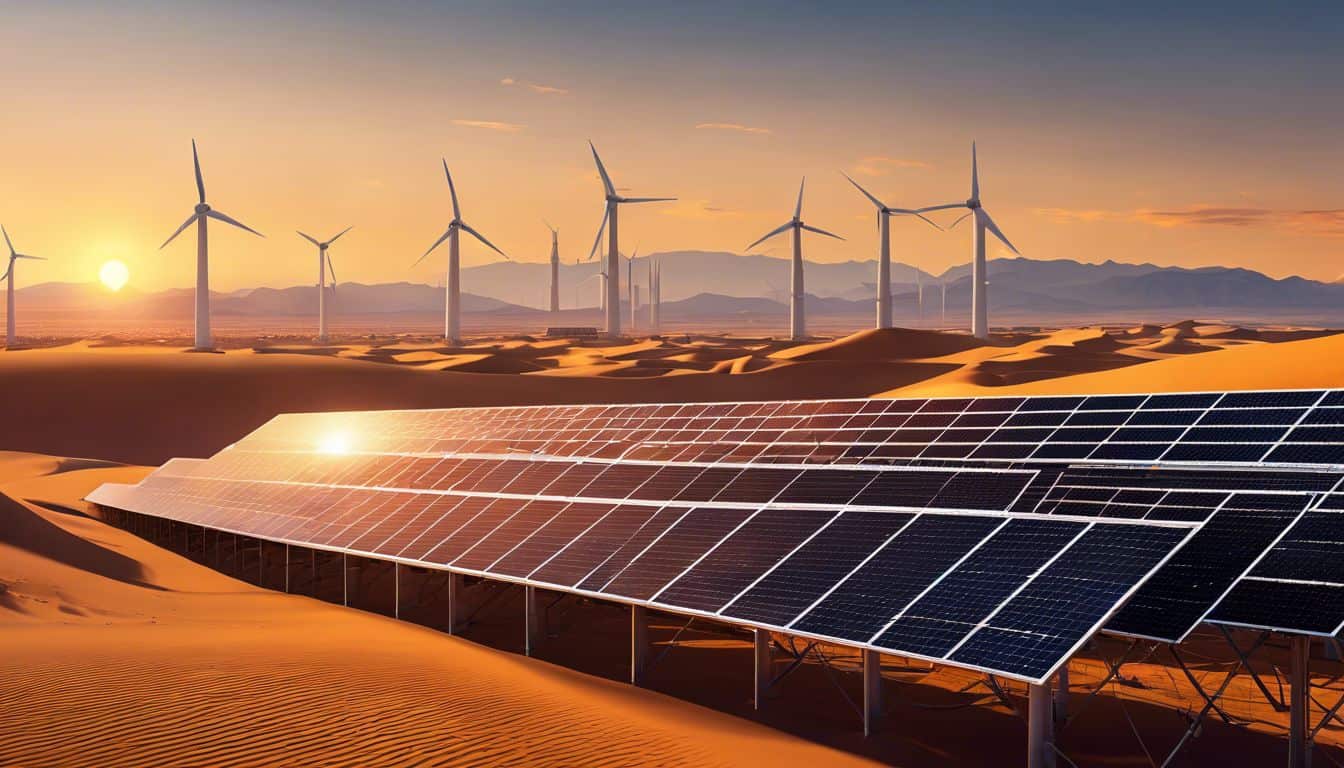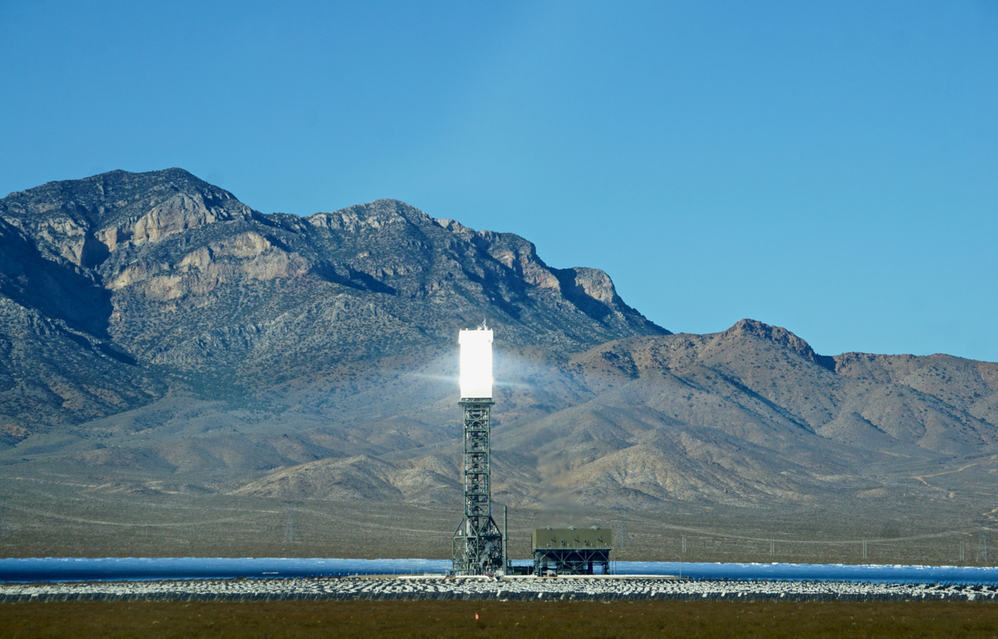As the world grapples with the urgent need to address climate change, innovative renewable energy solutions are taking center stage. Among these, Concentrated Solar Power (CSP) has emerged as a promising technology with the potential to revolutionize our approach to clean energy generation. This article explores how CSP is making significant strides in the fight against climate change and shaping a sustainable energy future.
Understanding Concentrated Solar Power
Concentrated Solar Power systems harness the sun’s energy by using mirrors or lenses to concentrate a large area of sunlight onto a small area. This concentrated light is then converted into heat, which drives a heat engine (usually a steam turbine) connected to an electrical power generator.
There are four main types of CSP systems:
- Parabolic trough systems
- Power tower systems
- Dish/engine systems
- Linear Fresnel reflector systems
Unlike photovoltaic solar panels, which directly convert sunlight into electricity, CSP systems use the sun’s heat to generate power. This fundamental difference allows CSP to overcome one of the main challenges of solar energy: intermittency.

The Climate Change Mitigation Potential of CSP
CSP technology offers significant potential for mitigating climate change. By providing a clean, renewable source of energy, CSP systems can dramatically reduce greenhouse gas emissions associated with electricity generation. The scalability of CSP projects means they can be deployed at utility-scale, providing substantial amounts of clean energy to the grid.
One of the most significant advantages of CSP in the fight against climate change is its ability to provide baseload power. Thanks to thermal energy storage capabilities, CSP plants can continue generating electricity even when the sun isn’t shining, addressing the intermittency issues that plague other renewable energy sources.
Advantages of CSP in Combating Climate Change
CSP systems offer several key advantages in the battle against climate change:
- High efficiency and capacity factors: CSP plants can achieve higher efficiency rates compared to many other renewable technologies, meaning more energy is produced per unit of land area.
- Thermal energy storage: This feature allows CSP plants to provide power during peak demand periods and continue generating electricity after sunset, enhancing grid stability.
- Reduced water consumption: While CSP plants do require water for cooling, advanced dry-cooling technologies have significantly reduced water usage compared to traditional power plants.
- Potential for hybrid systems: CSP can be combined with other renewable technologies or even fossil fuel plants to create more efficient and flexible power generation systems.
Current State and Future Projections of CSP
The global installed capacity of CSP has been growing steadily, with several large-scale projects coming online in recent years. As technology improves and costs decrease, CSP is becoming increasingly competitive with other forms of energy generation. The future of CSP looks promising, with ongoing research focused on improving efficiency, reducing costs, and developing new applications for the technology.
For a detailed look at the latest developments in this field, check out this guide to concentrated solar power innovations.
Case Studies: Successful CSP Projects
Several large-scale CSP projects around the world demonstrate the technology’s potential:
- Ivanpah Solar Power Facility (USA): One of the world’s largest CSP plants, generating 392 MW of clean energy.
- Noor Complex (Morocco): A massive CSP project that, when completed, will provide 24/7 solar power to millions of homes.
- Atacama Desert projects (Chile): Utilizing the world’s best solar resources to generate clean power and stimulate local economies.
These projects not only provide clean energy but also contribute to local economic development, creating jobs and stimulating investment in often remote areas.
Challenges and Solutions for CSP Deployment
Despite its potential, CSP faces several challenges:
- High initial costs: While costs are decreasing, CSP still requires significant upfront investment.
- Land use and environmental concerns: Large-scale CSP projects require substantial land area, which can impact local ecosystems.
- Grid integration: Connecting large CSP plants to existing grid infrastructure can be challenging, especially in remote areas.
However, ongoing research and development are addressing these challenges, with innovations in materials, design, and grid integration technologies promising to make CSP more accessible and efficient.
The Role of CSP in a Sustainable Energy Future
CSP has a crucial role to play in achieving sustainable development goals. Beyond electricity generation, CSP technology has potential applications in industrial process heat, water desalination, and even the production of solar fuels.
By providing a reliable, clean source of energy, CSP can contribute to energy security and independence, particularly in regions with abundant solar resources.

Conclusion
Concentrated Solar Power represents a powerful tool in the fight against climate change. Its ability to provide clean, dispatchable energy makes it a valuable component of a sustainable energy future. As technology continues to advance and costs decrease, CSP is poised to play an increasingly important role in our global energy mix.
To fully realize the potential of CSP in combating climate change, continued investment in research and development, supportive policy frameworks, and international cooperation will be crucial. By harnessing the power of the sun through CSP, we can take significant strides towards a cleaner, more sustainable future.
FAQ
How does CSP’s cost compare to solar PV with battery storage?
CSP becomes cost-competitive with PV+battery systems when daily storage exceeds 6 hours. Recent projects like Dubai’s 700MW DEWA plant achieve electricity at $0.073/kWh, beating PV+4hr battery costs ($0.085/kWh) in similar markets. This advantage grows for systems requiring 8+ hours of storage due to CSP’s cheaper thermal storage versus electrochemical batteries.
What emerging technologies could make CSP more efficient?
2023 saw breakthroughs in:
- Particle receivers: Achieving 975°C temperatures (vs 565°C in molten salt systems)
- AI-optimized heliostats: Machine learning reduces mirror alignment errors by 40%
- Supercritical CO2 turbines: 50% smaller footprint with 10% higher efficiency
These innovations could boost CSP’s capacity factor to 85% by 2030.
Can CSP plants help combat desertification?
Yes, innovative projects like China’s Hainan CSP hybrid plant use mirror arrays to:
- Reduce ground wind speeds by 37%
- Create microclimates increasing vegetation cover by 15%
- Provide structured shade for agrovoltaic farming
The Noor Midelt plant in Morocco now yields 800 tons/year of drought-resistant crops beneath its mirrors.
What policy changes are accelerating CSP adoption?
Key 2024 developments include:
- EU Taxonomy inclusion: CSP now qualifies for green bonds
- US IRA updates: 30% tax credit + $25/MWh dispatchability bonus
- Saudi Arabia’s offset mandate: 50% of new industrial energy must come from CSP thermal storage by 2027
How does CSP complement green hydrogen production?
Modern CSP plants like Australia’s SunCable can:
- Deliver 24/7 650°C process heat for electrolysis
- Achieve 28% round-trip efficiency in hydrogen mode
- Use existing steam cycles for dual power/hydrogen output
This integration reduces hydrogen production costs by 34% compared to PV-only systems.
What’s the land use efficiency compared to other renewables?
| Technology | Land Use (km²/TWh/year) |
|---|---|
| CSP with storage | 3.2 |
| Solar PV + battery | 5.1 |
| Onshore wind | 8.7 |
New vertical bifacial mirror designs could reduce CSP’s footprint by 40% by 2026.
How are developing nations leveraging CSP?
Emerging markets are adopting modular CSP:
- South Africa: 100MW “quick-build” towers using prefab components
- Chile: Containerized molten salt storage for remote mines
- India: 50:50 CSP-biomass hybrids using agricultural waste
The World Bank’s 2024 CSP Accelerator aims for 50% cost reduction in small-scale (<50MW) systems.

Leave a Reply